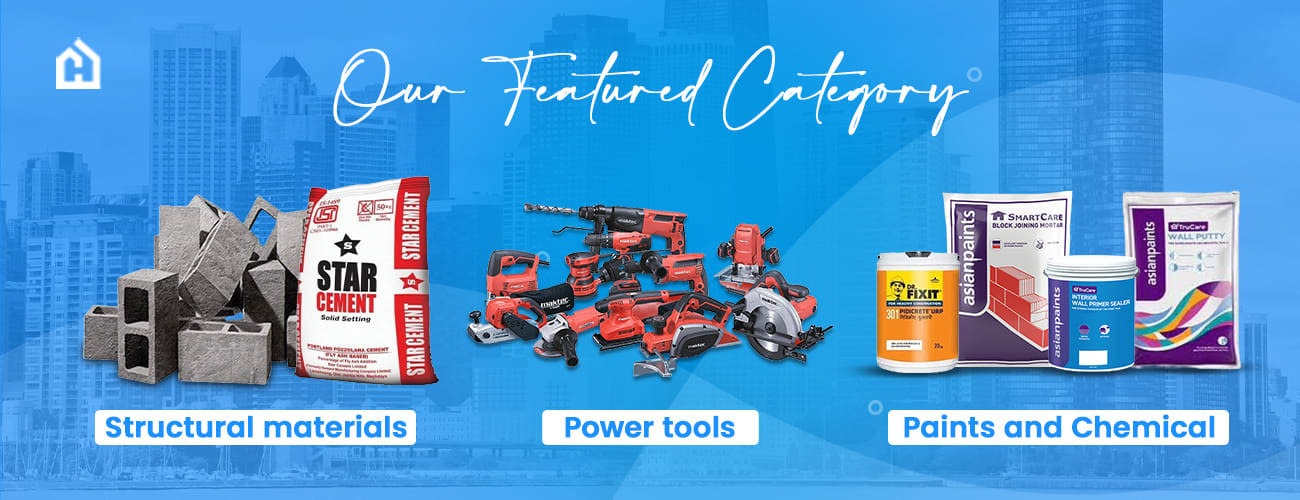How do I know if AAC blocks are of good quality?

In the realm of construction materials, AAC (Autoclaved Aerated Concrete) blocks have gained popularity for their lightweight, thermal insulation properties, and eco-friendly characteristics. However, ensuring the quality of AAC blocks is crucial for the success and longevity of your construction project. In this comprehensive guide, we'll explore various indicators that can help you determine if AAC blocks are of good quality.
Table of Contents
| Sr | Headings
| --- | -------------------------------------------- |
| 1 | Understanding AAC Blocks
| 2 | Visual Inspection of AAC Blocks
| 3 | Sound Test for AAC Blocks
| 4 | Density and Compressive Strength Analysis
| 5 | Absorption Test
| 6 | Fire Resistance Evaluation
| 7 | Conclusion
| 8 | FAQs
Understanding AAC Blocks
AAC blocks are manufactured from a mixture of sand, cement, lime, and aluminum powder, which undergoes a chemical reaction resulting in the formation of millions of tiny air bubbles, imparting lightweight and thermal insulation properties to the blocks. These properties make AAC blocks an attractive choice for various construction applications, including walls, floors, and roofs.
Visual Inspection of AAC Blocks
One of the simplest ways to assess the quality of AAC blocks is through visual inspection. Look for uniformity in shape, size, and texture. Check for any cracks, chips, or surface irregularities, as these may indicate manufacturing defects or poor handling during transportation. Additionally, inspect the edges and corners of the blocks for smoothness and consistency.
Sound Test for AAC Blocks
Quality AAC blocks produce a clear, ringing sound when struck gently with a hammer or mallet. The sound should be consistent and resonate throughout the block. Dull or hollow sounds may indicate internal voids or inadequate compaction, which can compromise structural integrity. Conducting a sound test is a quick and effective way to identify any defects or inconsistencies in AAC blocks.
Density and Compressive Strength Analysis
Measuring the density and compressive strength of AAC blocks is essential for evaluating their load-bearing capacity and durability. High-quality AAC blocks typically exhibit uniform density and meet specified compressive strength requirements. Density is determined by the amount of air trapped within the block, while compressive strength indicates the block's ability to withstand external loads without deformation or failure.
Absorption Test
Conducting an absorption test can help assess the moisture resistance of AAC blocks. Submerge the blocks in water for a specified period and observe the rate at which they absorb moisture. Low absorption rates indicate good quality and resistance to water ingress. Excessive absorption may indicate porosity or insufficient curing, which can lead to moisture-related issues such as efflorescence or deterioration over time.
Fire Resistance Evaluation
AAC blocks are known for their excellent fire resistance properties, making them suitable for use in fire-rated walls and structures. Verify that the blocks meet relevant fire safety standards and ratings, ensuring they can withstand high temperatures without significant deterioration or structural damage. Look for certifications or test reports from reputable testing laboratories to confirm the fire resistance performance of AAC blocks.
Conclusion
In conclusion, ensuring the quality of AAC blocks is essential for the success of any construction project. By performing visual inspections, conducting sound tests, analyzing density and compressive strength, evaluating moisture absorption, and verifying fire resistance, you can confidently select AAC blocks of superior quality for your construction needs. Prioritize quality assurance measures to mitigate risks and ensure the durability and safety of your building structures.
FAQs
Q1. Are AAC blocks suitable for load-bearing applications?
A1. Yes, AAC blocks possess sufficient compressive strength and durability to be used in load-bearing walls and structures. They offer excellent structural integrity and can support vertical loads effectively.
Q2. Can AAC blocks be cut or drilled easily during installation?
A2. Yes, AAC blocks can be cut, drilled, or shaped using standard tools without significant difficulty. However, it's essential to use appropriate techniques and equipment to achieve precise cuts and avoid chipping or damage to the blocks.
Q3. Are AAC blocks environmentally friendly?
A3. Yes, AAC blocks are considered environmentally friendly due to their low energy consumption during manufacturing and recyclable properties. They contribute to sustainable construction practices by reducing energy consumption, greenhouse gas emissions, and waste generation.
Q4. How do AAC blocks compare to traditional clay bricks in terms of insulation properties?
A4. AAC blocks offer superior thermal insulation compared to traditional clay bricks, resulting in energy-efficient buildings with reduced heating and cooling costs. The cellular structure of AAC blocks traps air pockets, providing excellent thermal resistance and enhancing indoor comfort levels.
Q5. Can AAC blocks be plastered directly?
A5. Yes, AAC blocks can be plastered directly using suitable mortar mixes, providing a smooth and uniform finish. However, it's essential to prepare the surface properly by removing any dust, debris, or contaminants and applying a bonding agent to enhance adhesion between the plaster and the block surface.












